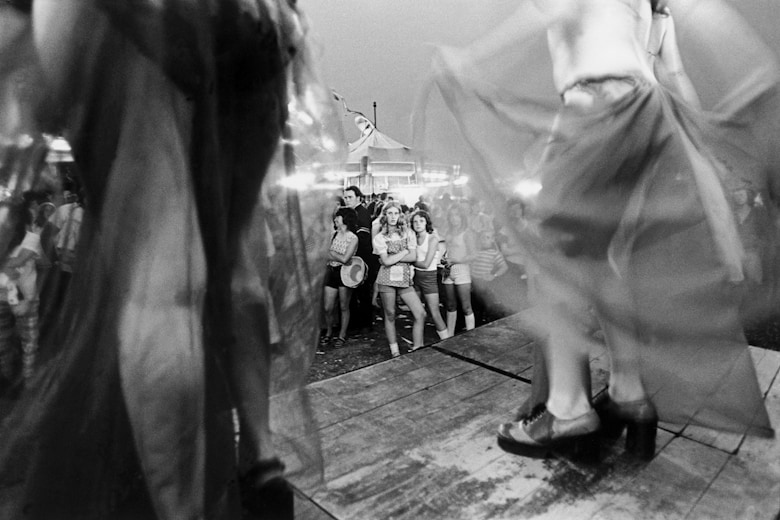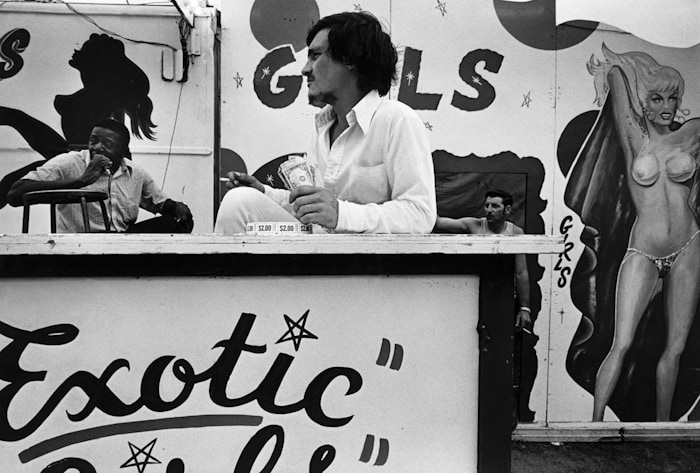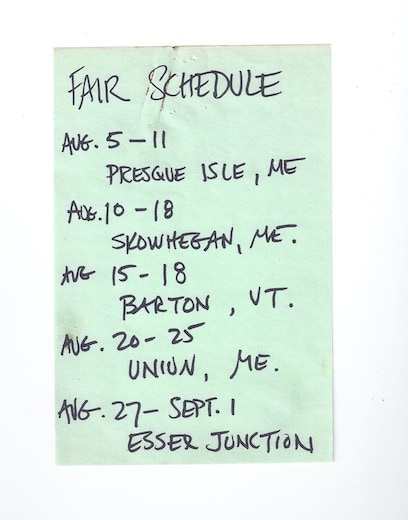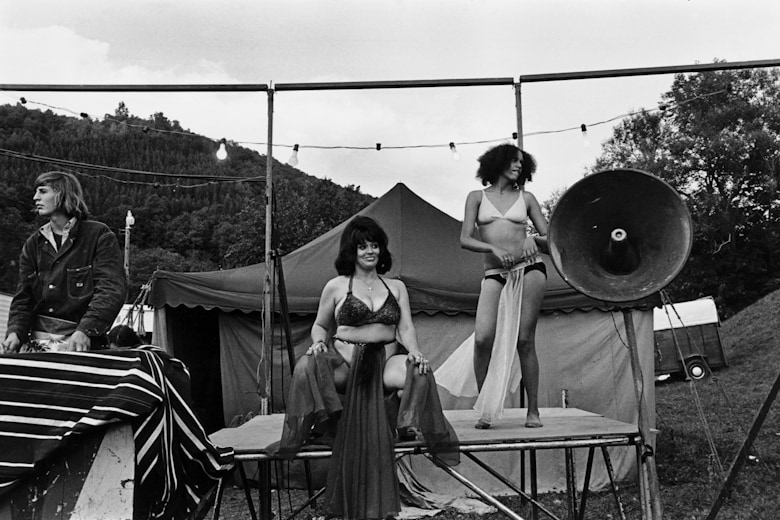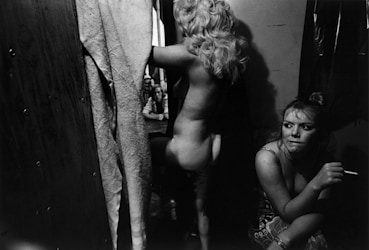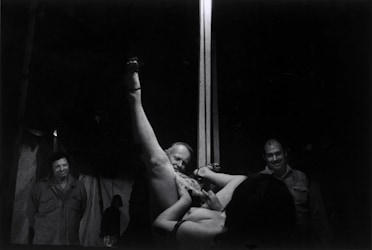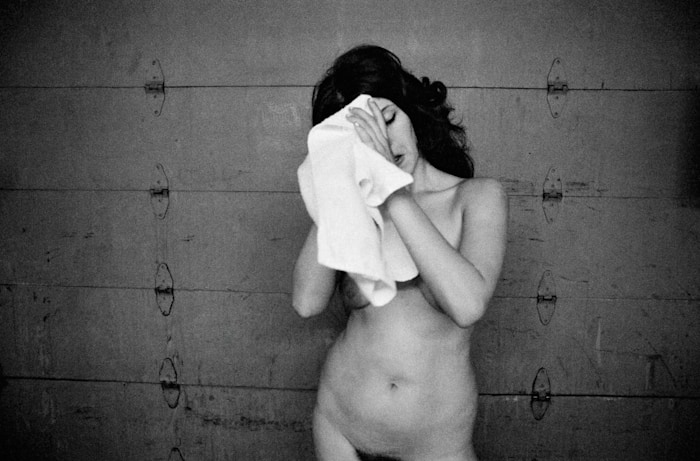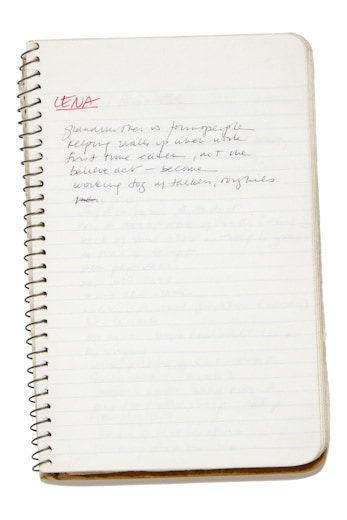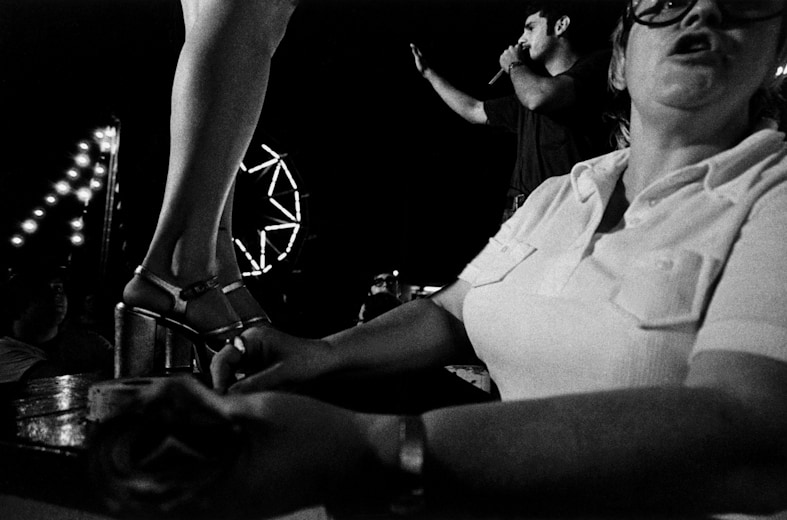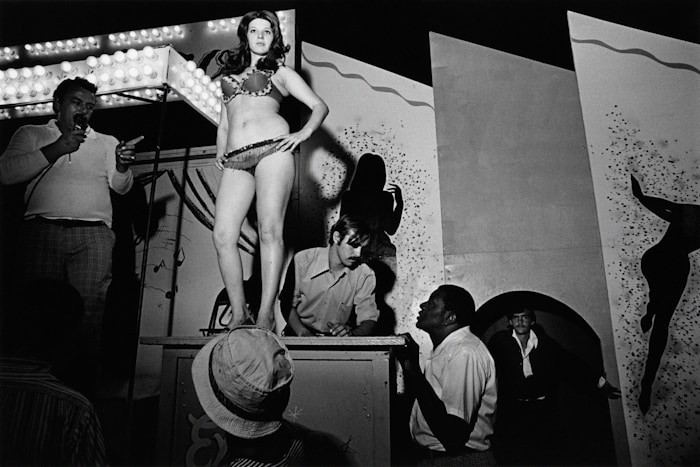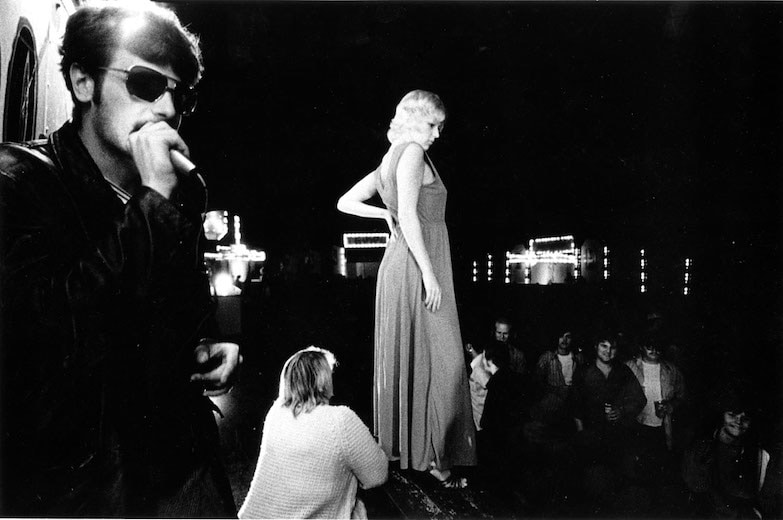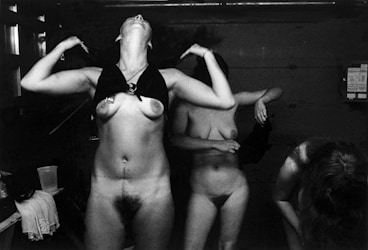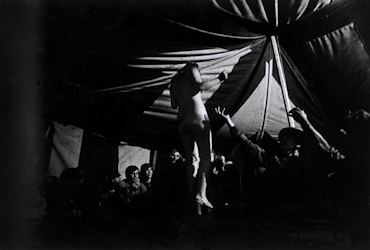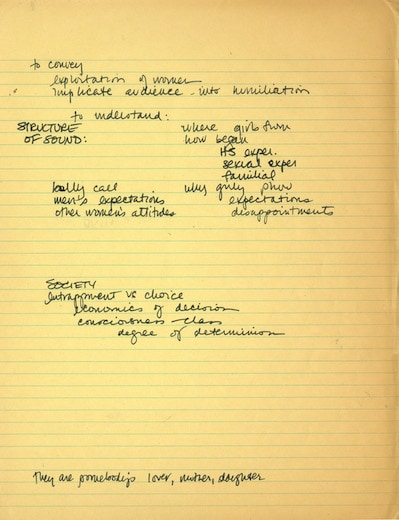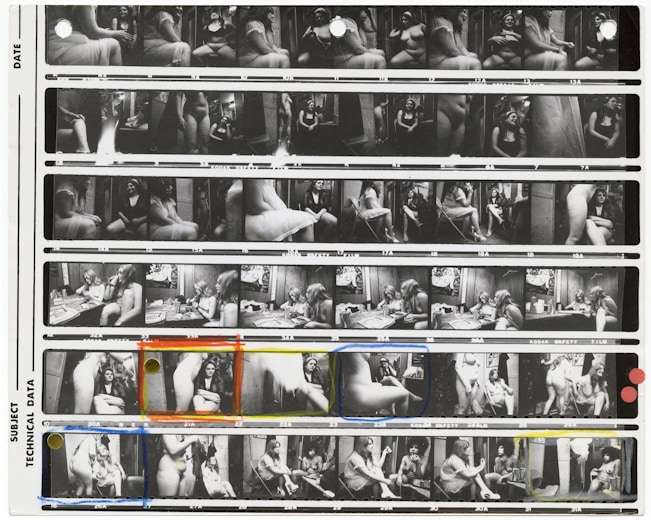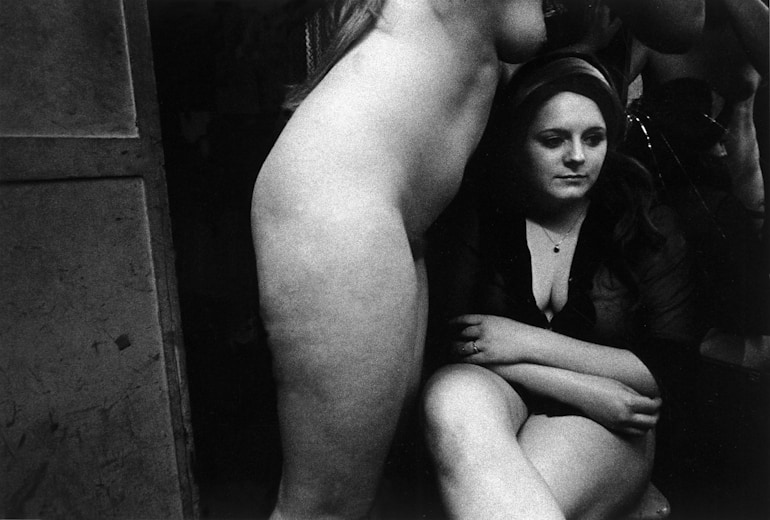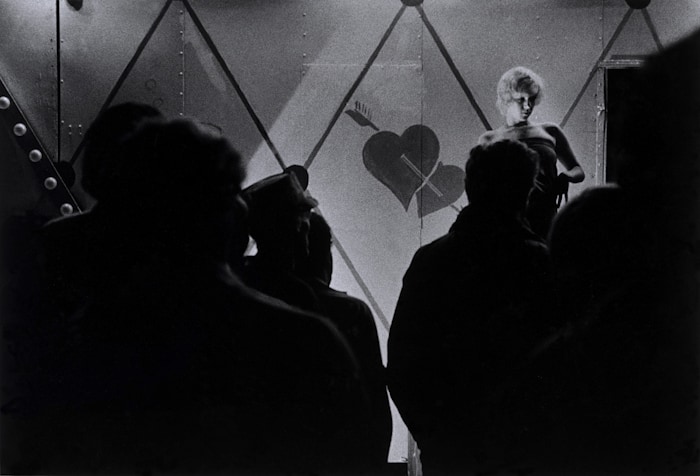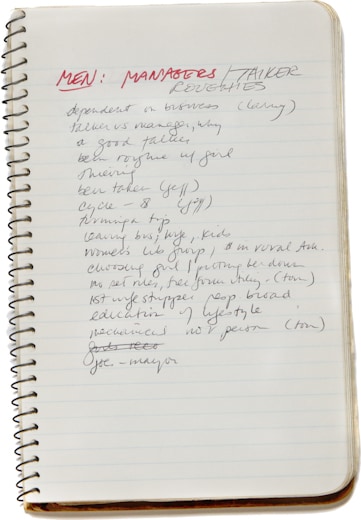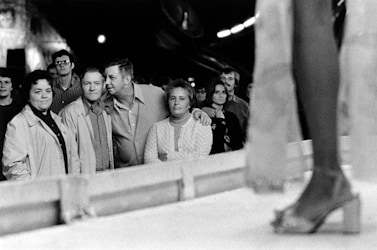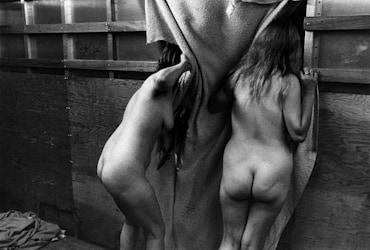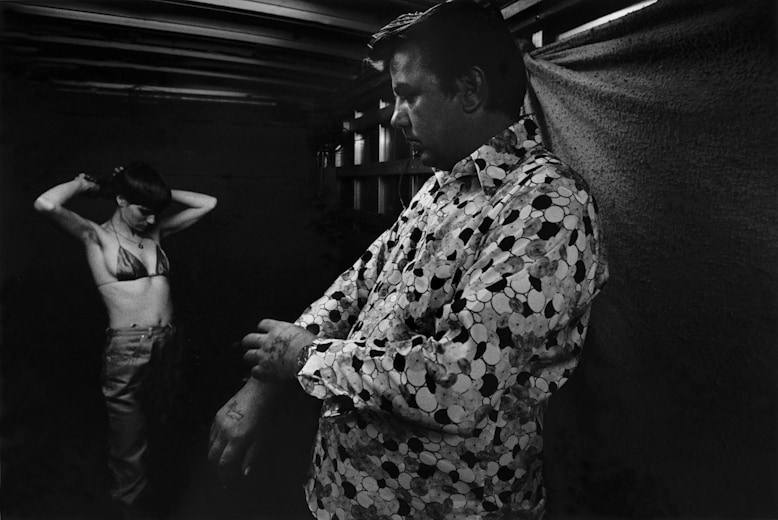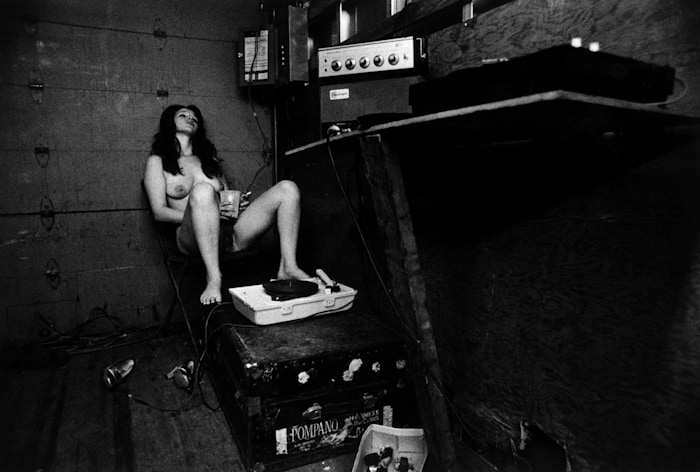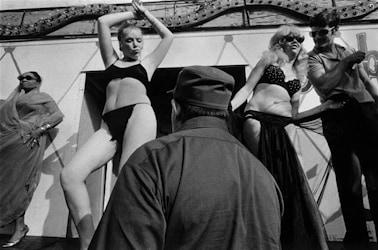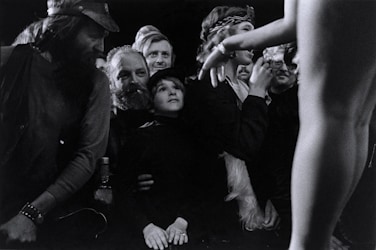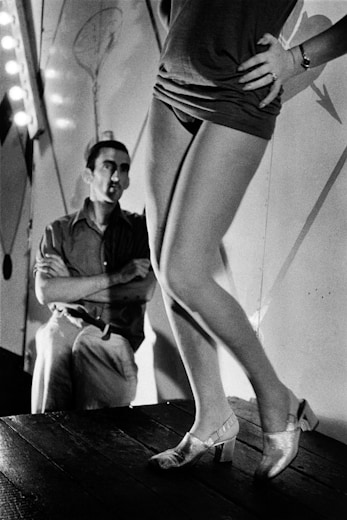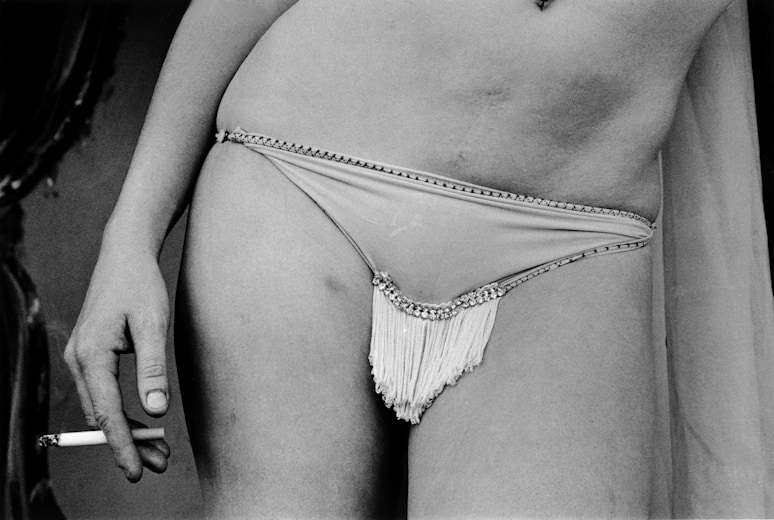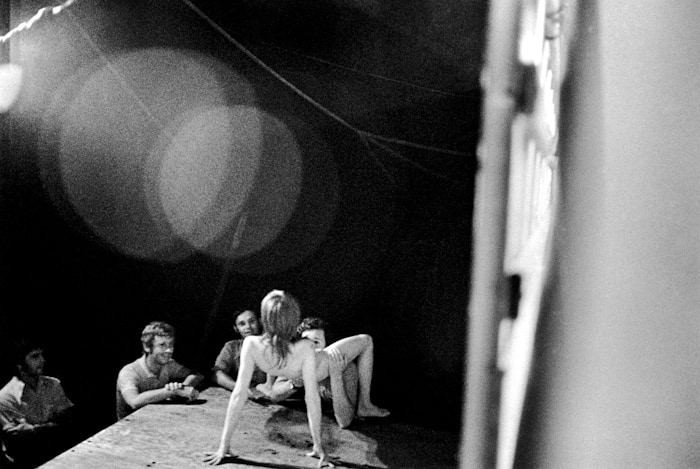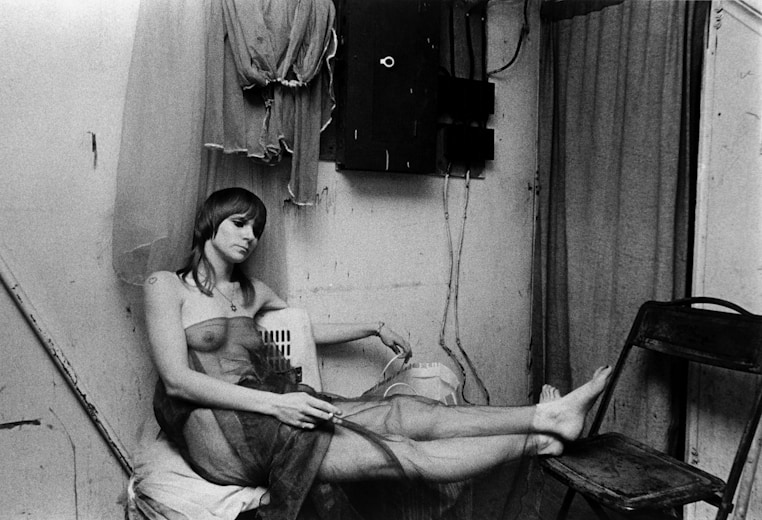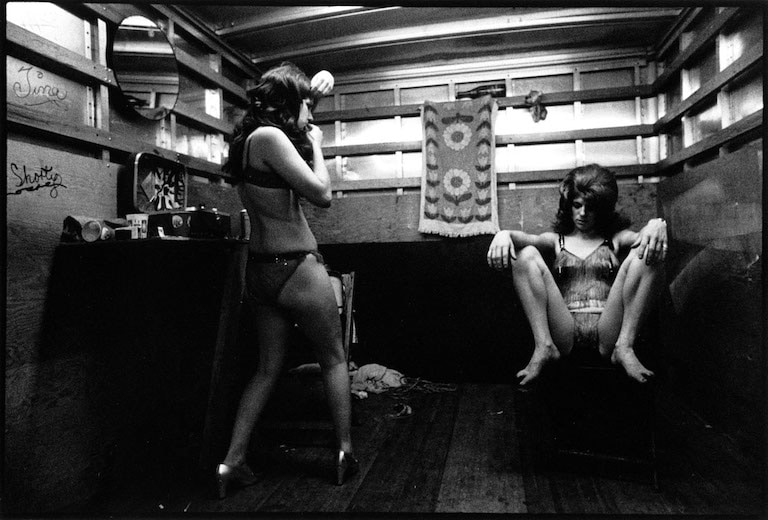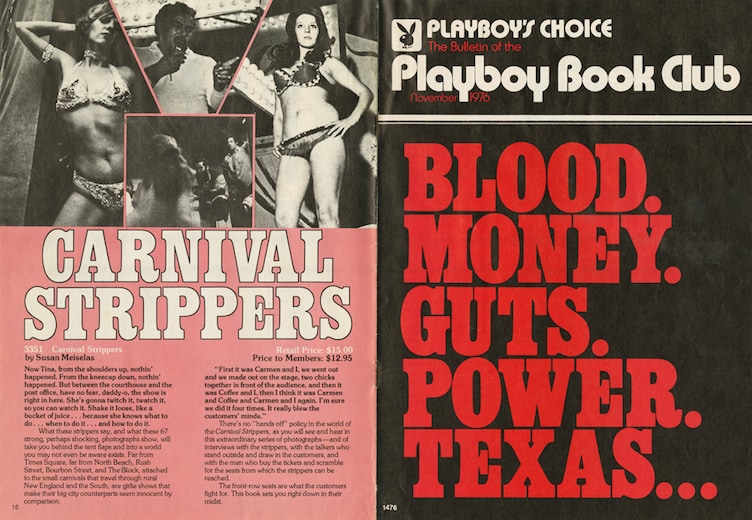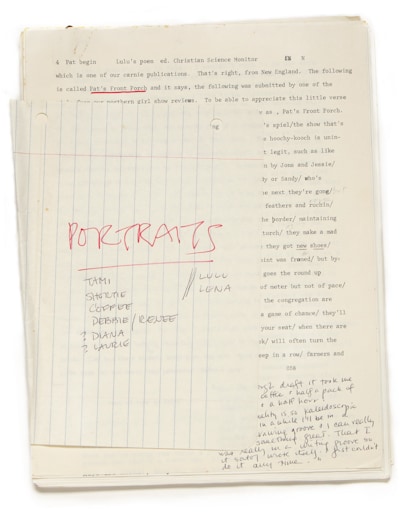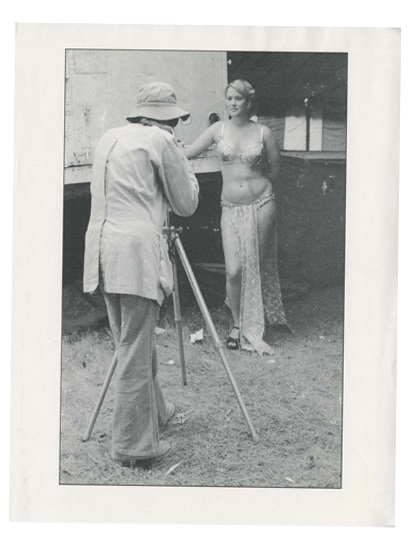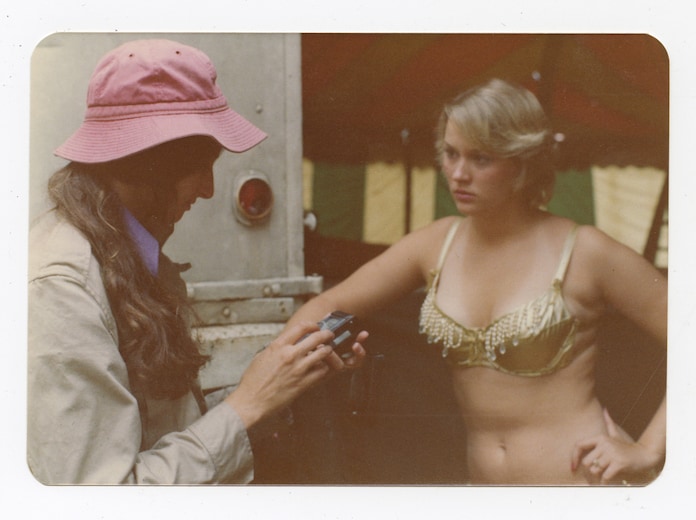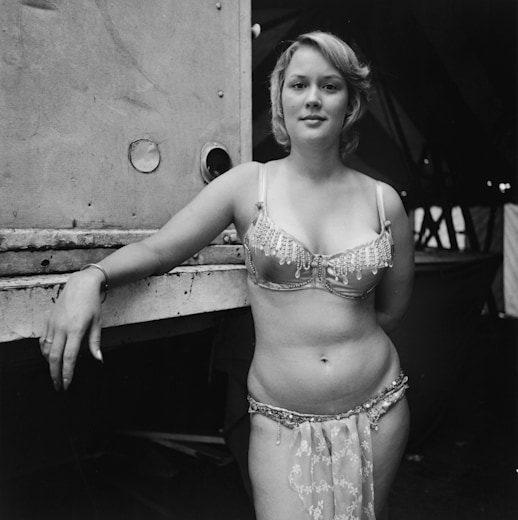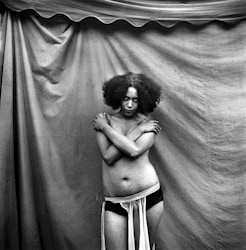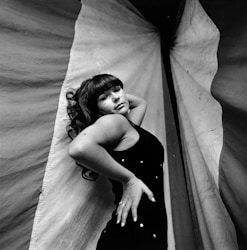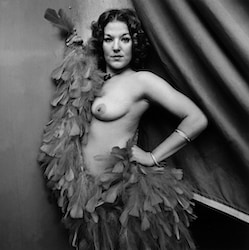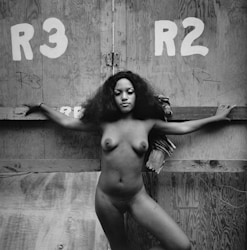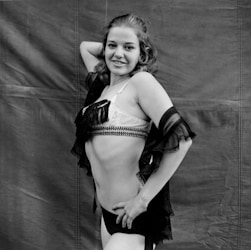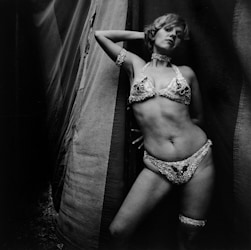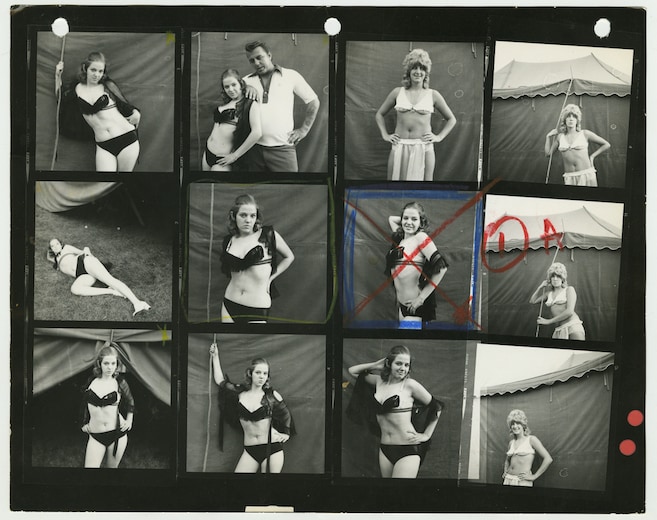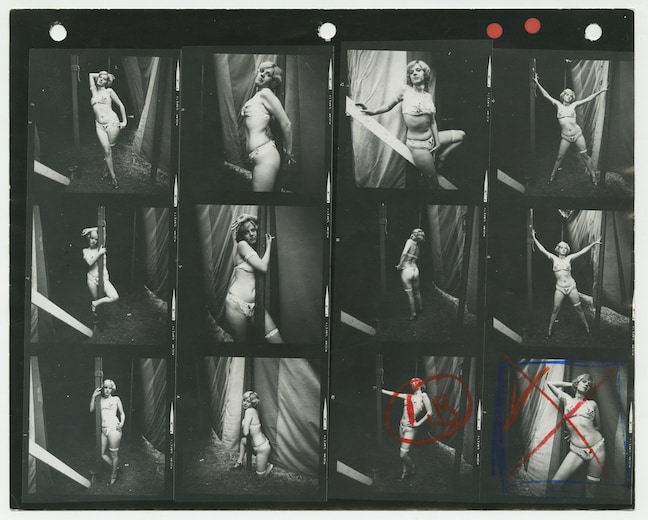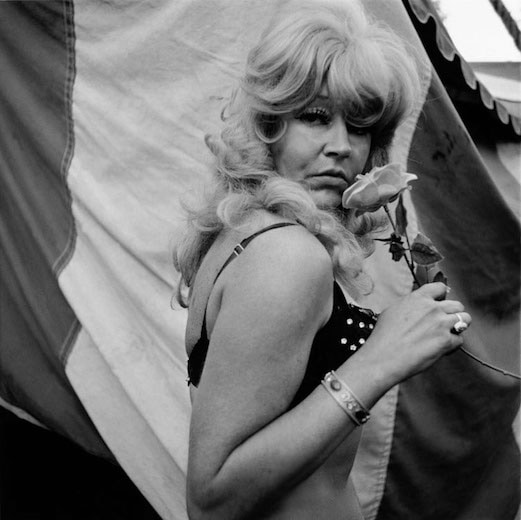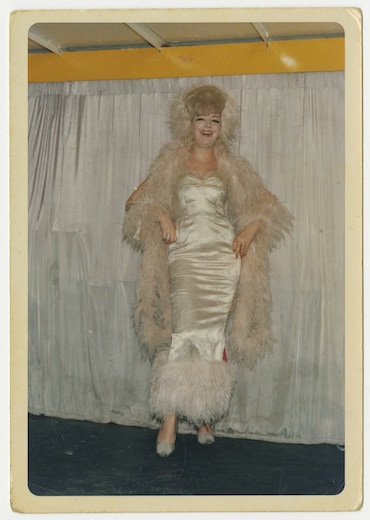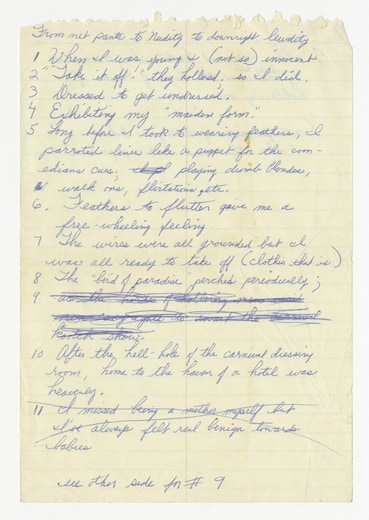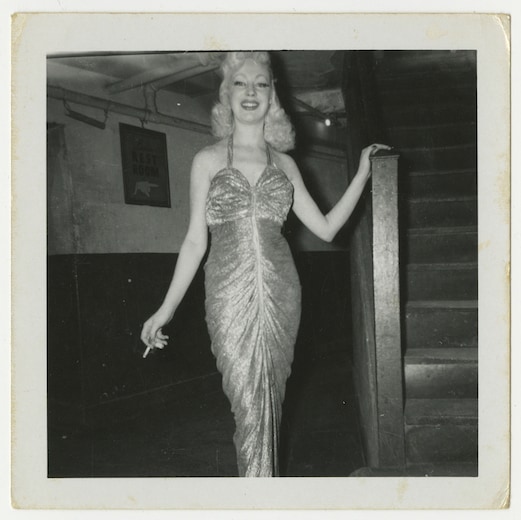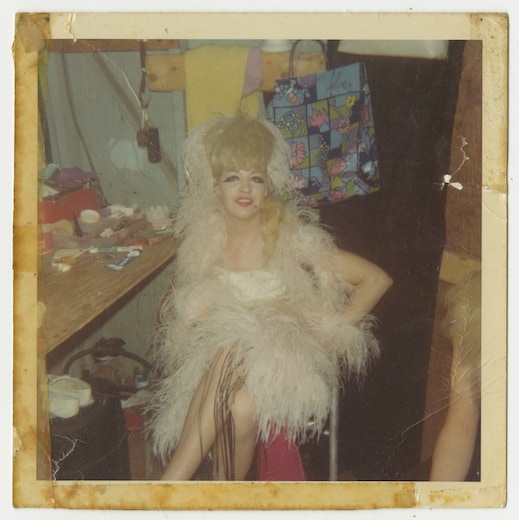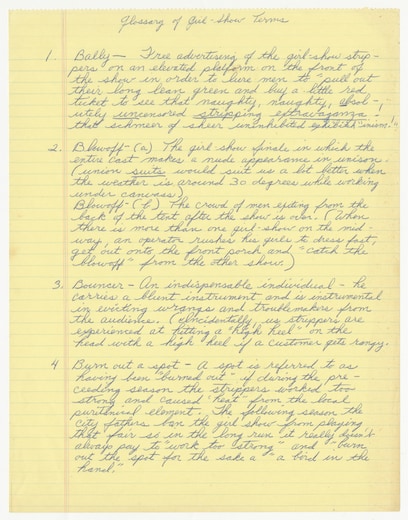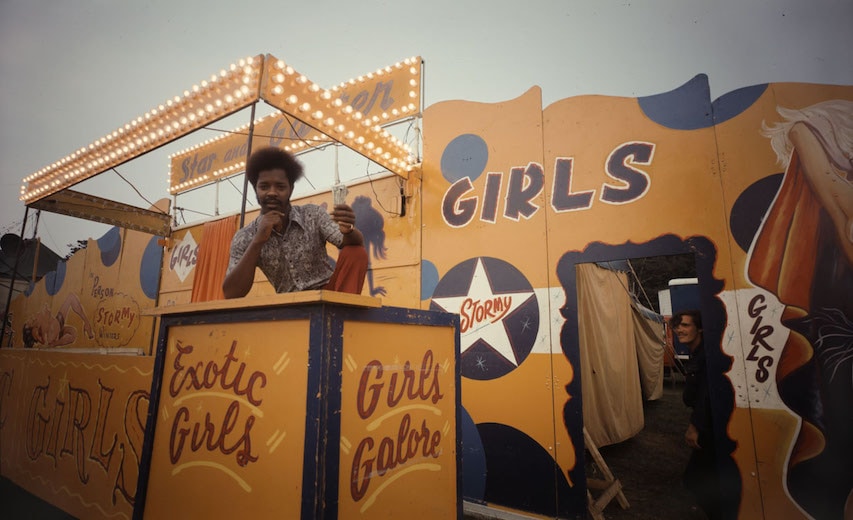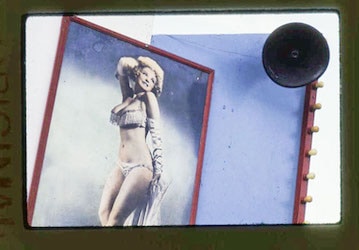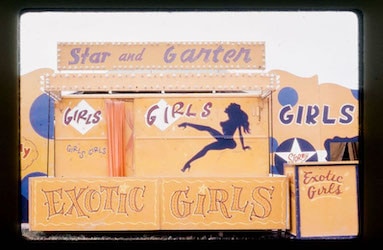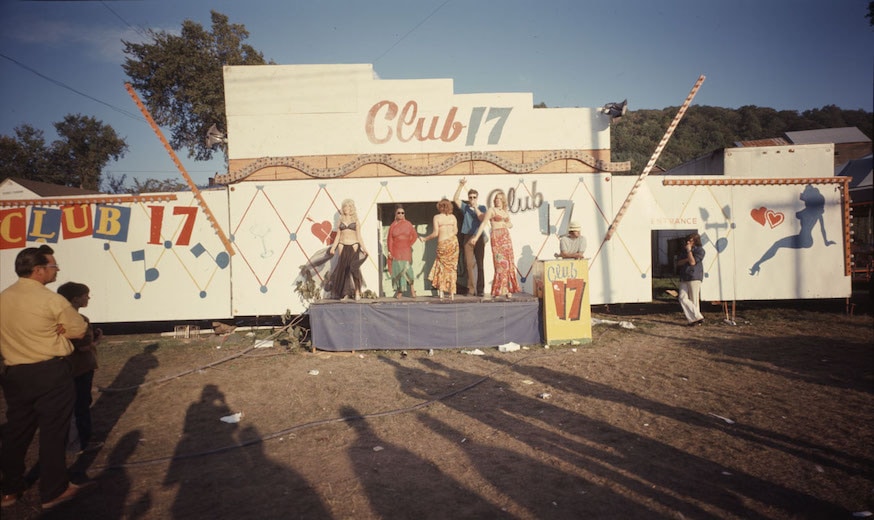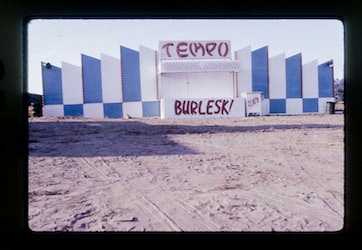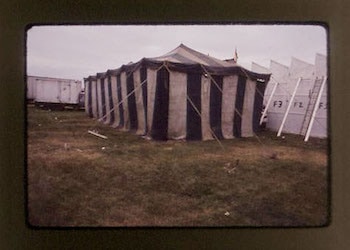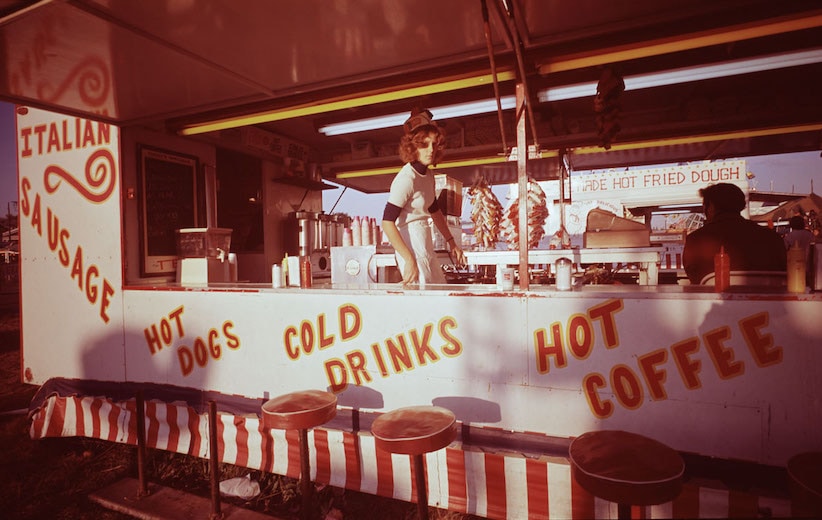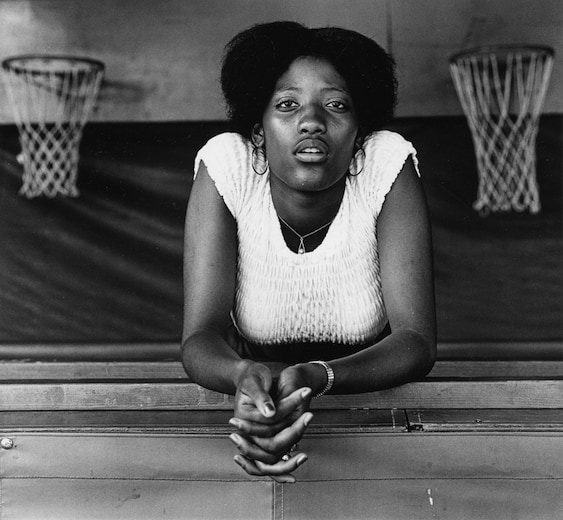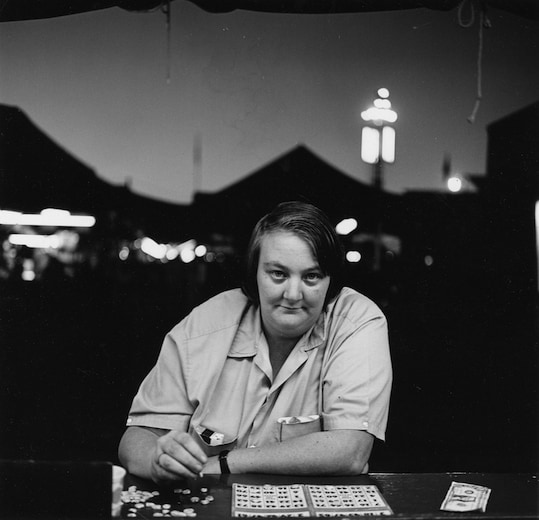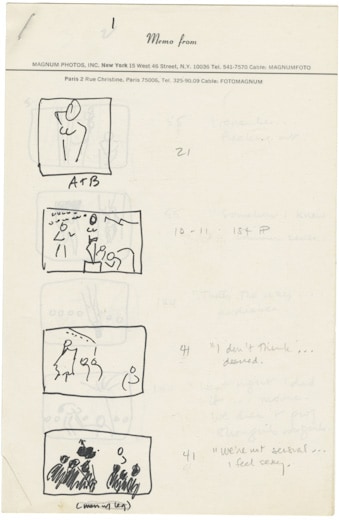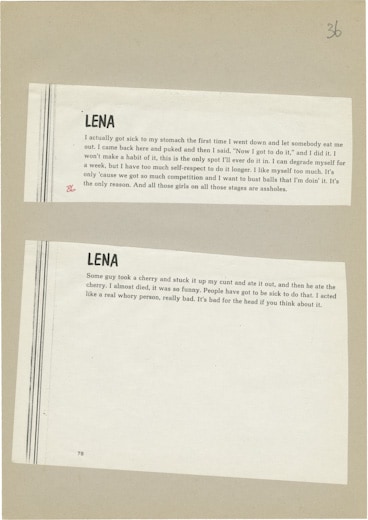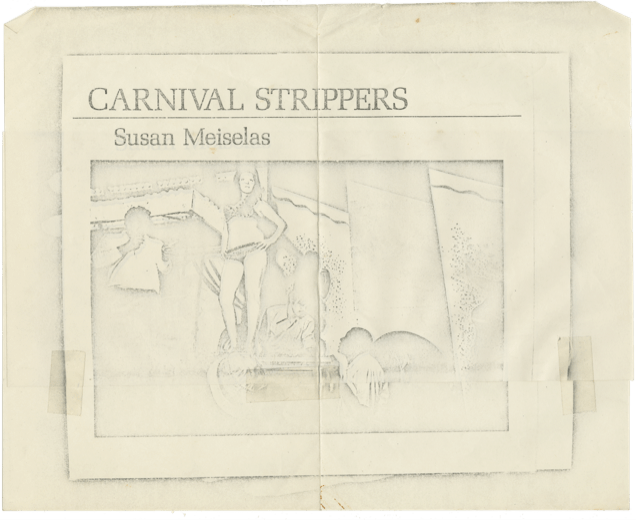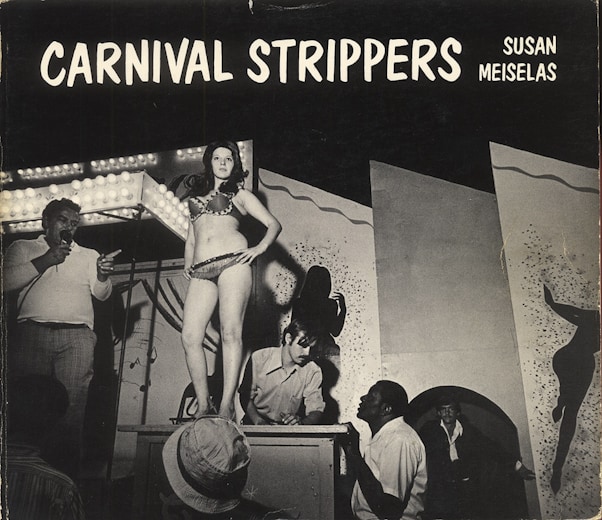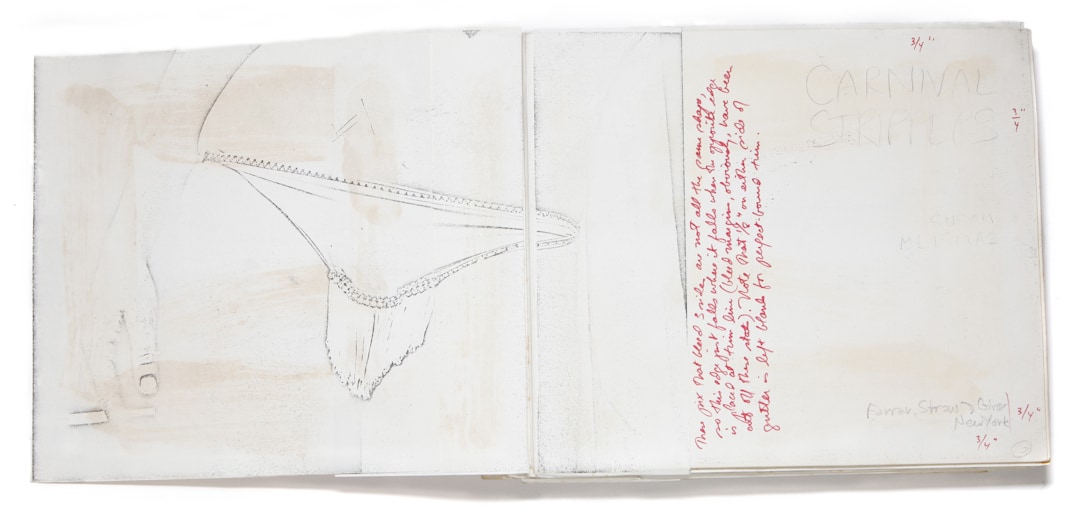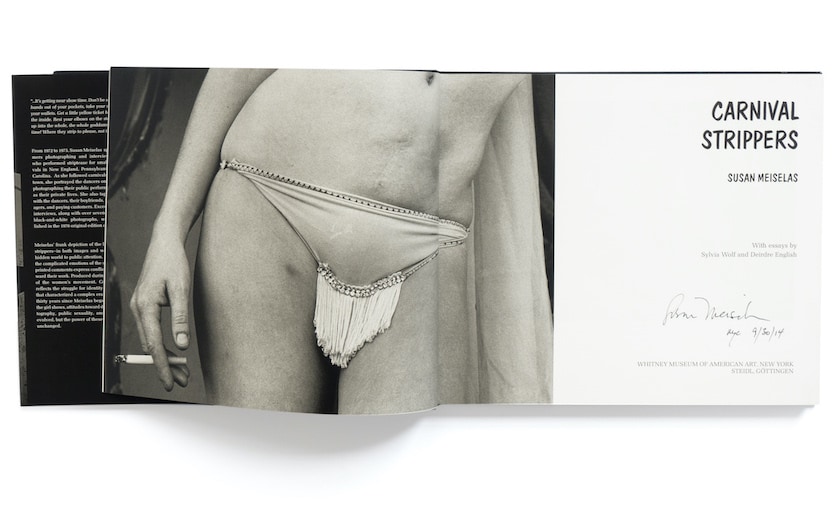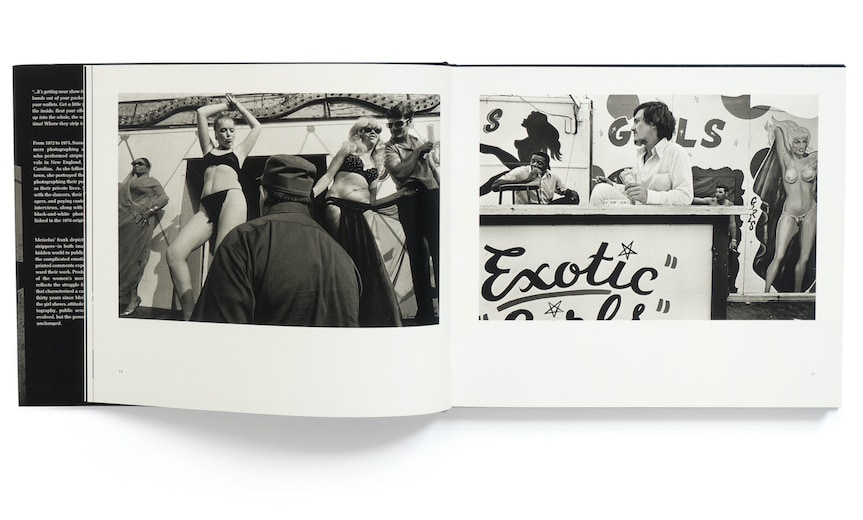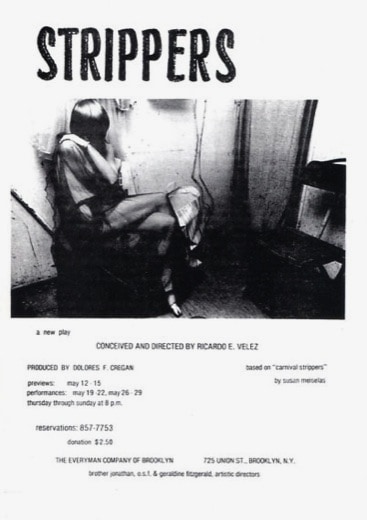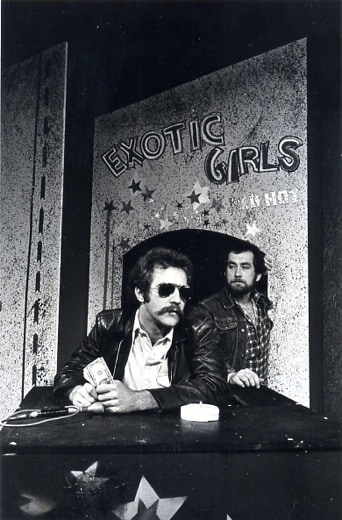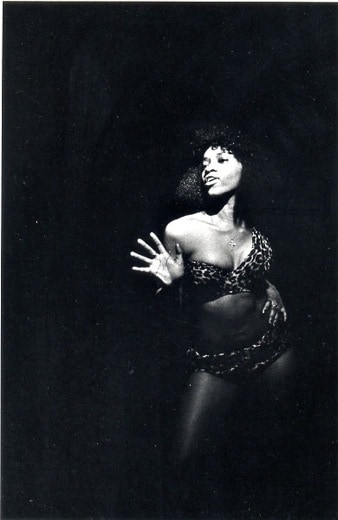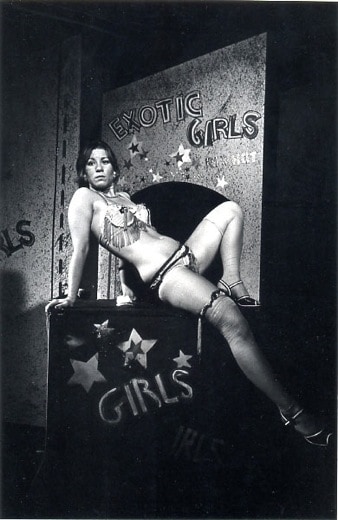Carnival Strippers
New England, 1972-1975.
From 1972 to 1975, I spent my summers photographing and interviewing women who performed striptease for small town carnivals in New England, Pennsylvania, and South Carolina. As I followed the girl shows from town to town, I photographed the dancers' public performances as well as their private lives. I also taped interviews with the dancers, their boyfriends, the show managers, and paying customers.
-S.M.The women I met ranged in age from seventeen to thirty-five. Most had left small towns, seeking mobility, money and something different from what was prescribed or proscribed by their lives that the carnival allowed them to leave. They were runaways, girlfriends of carnies, club dancers, both transient and professional.
They worked out of a traveling box, a truck that unfolded to form two stages, one opening to the public carnival grounds, another concealed under a tent for a private audience. A dressing room stands between them. Again and again, throughout the day and night, the woman performers moved from the front stage, with its bally call—the talker's spiel that entices the crowd—to the stage, where they each perform for the duration of a 45 pop record.
(From Carnival Strippers book, 1976)
The all-male audience typically included farmers, bankers, fathers, and sons, but "no ladies and no babies." The degree of suggestion on the front stage and participation on the back stage under the tent varied greatly from town to town, depending on legislation and local leniency. The show stayed at each spot for three to five days each year; then the carnival was torn down, the truck packed up, and the women followed.
(From Carnival Strippers book, 1976)
“Backstage or on stage, before show and after, Meiselas handles the charged material with the precision of computing a complex equation, mindful of mystification and deprivation but never letting either take charge, always focusing on the person who animates the idea.”
—Buffalo Evening News, June 4, 1975 by Anthony Bannon
“Carnival Strippers does not stoop to whining about what men do to women, anymore than the Nicaraguan work descends to the level of anti-Somoza propaganda. In both cases Meiselas portrays a subtler and more basic contest, in which the universal drive toward decency contends against the lower forms of lust, and the conventional hypocrisies. The work is political but not polemical.”
—American Photographer, March 1981 by Laurence Shames
The first edition of Carnival Strippers was 150 pages with seventy-three images and was published in French and English editions. Critics in the United States lauded the book as "depressing though definitely illuminating" and a "fine and compassionate documentary."
- Sylvia Wolf, from Carnival Strippers 2nd edition, 2003
Within a few years of its publication, two plays – one in the United States and one in France – were produced based on Carnival Strippers. Ricardo E. Velez directed the Everyman Company of Brooklyn, New York, in a production of Strippers in May 1977. (A different production, titled Strip et Boniment, was directed by Judith DePaule for the company Sentimental Bourreau and performed in Paris and Nancy, France, in 1991.)
- Sylvia Wolf, from Carnival Strippers 2nd edition, 2003
